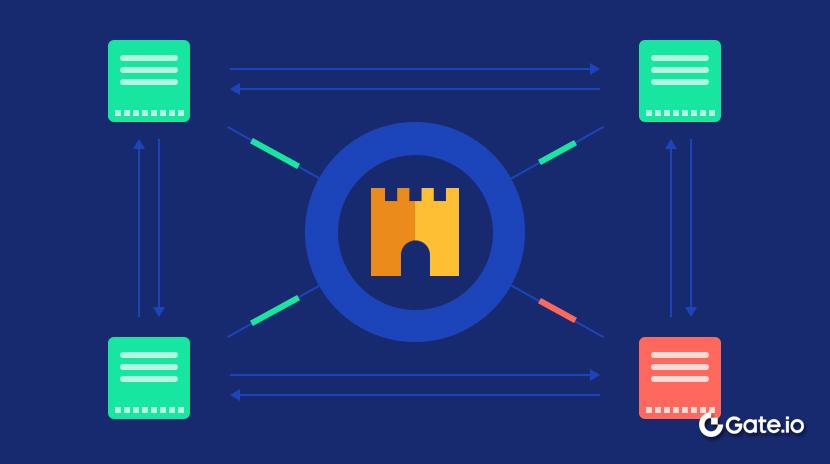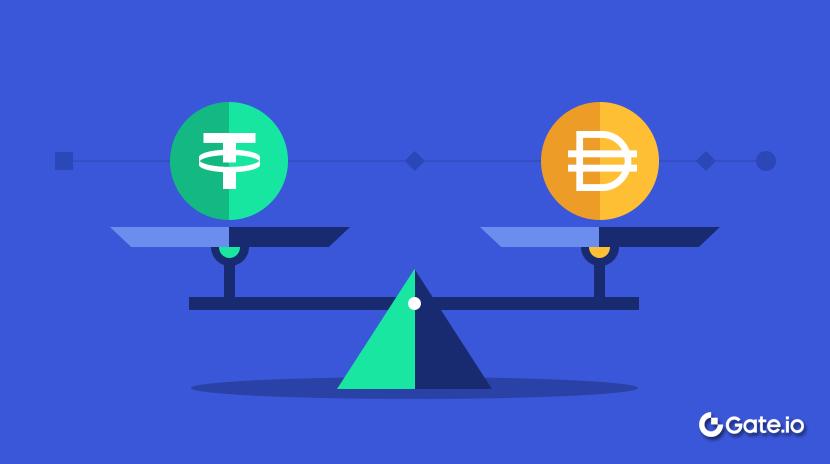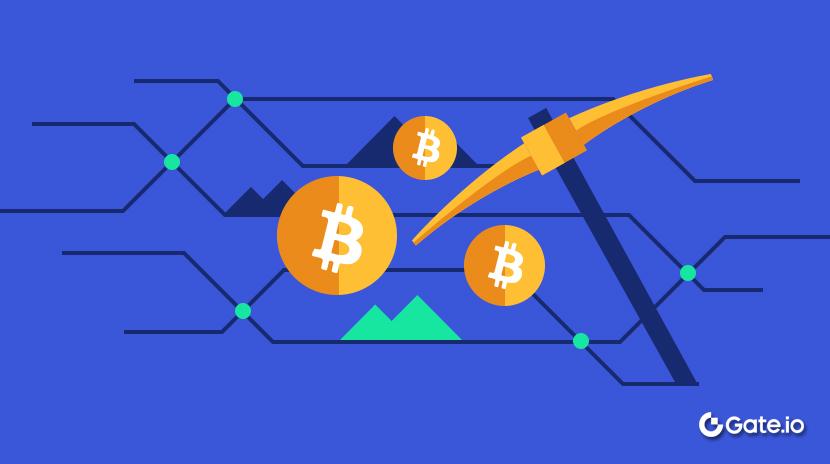Open Rug 24 - Kaito Three-Pool Model Analysis
この記事では、KAITOのveTokenモデル、AIアルゴリズムがKOL(キーオピニオンリーダー)の影響力を測定する方法、および投票とステーキングのためのユニークなシステムについて詳しく説明しています。記事では、KAITOが普及ノードを管理し、世論を形成することで目標を達成する方法が強調されています。元のタイトルを転送する:オープンラグ24 - Kaito Three-Poolモデル分析
Kaitoに入る前に、まずいくつかの重要な質問に答えましょう
プロジェクトを立ち上げる際、最も重要な要素は観客です。では、その観客を引きつける秘訣は何でしょうか?
- The Story. Endorsements, stacking TVL, technical CX, and models/systems — in the end, it all comes down to telling a compelling story. The goal is to get the audience to respond to that story reflexively —
ジャック・マーが乗っているの?買え!秦始皇のプロジェクト?お金を投入しろ!
まだ混乱していますか?単に「パブロフの犬の訓練」とGoogleで検索してください。

- コミュニティリーダー、または伝播ノードは、集合無意識におけるウイルスのような存在です。彼らの仕事は、この「誤解」をより多くの人々に広めることです。
では、これらの「コミュニティリーダー」をどうやって勝ち取るのでしょうか?
従来のCX方法は、市場シェアと補助金に依存しています:株主は市場シェアを保有し、運営センターが補助金やおもてなしを提供して大量の販売を推進します。仮想通貨では、このモデルはKOLの調達に従います。
ただ、両方の手法に共通の欠点があります。
- 結果を見る前にお金を使う。
- 伝搬ノードは非常に断片化されているため、仲介者によって交渉やオンボーディングが時間と費用がかかる場合があります。
- 悪いプレーヤーが多すぎて、本当に影響力を持ち、その影響力を維持する能力を持つのはほんの一握りだけです。
最終的な伝統的なモデルは、人々の自由を制御することで、情報の伝達コストを削減し、結果を最大化するミャンマー北部の公園です。

普及ノードを買収するために、Huang Si Langの戦略は最も効果的です:娯楽、斬首、そして人々を犬に変える。
これがKAITOが行う正確に同じことです-プロジェクトの立ち上げコストを下げるために、大量購入普及ノードのインフラを提供します。
まず、「斬首」と「人を犬に変える」という考え方についてお話ししましょう。
私の見解では、KAITOの唯一の本当のAI関連の側面は、これらの概念である「斬首」と「人を犬に変えること」だと思います。
「斬首」とはどういう意味ですか?それは、誰かの成功や失敗をコントロールし、価格を設定する力を掌握することを指します。
過去、KOL(Key Opinion Leaders)がいくら請求していたかはブラックボックスのようでした。自己宣伝、同僚からの支持、そして代理店からの支援に依存していました。
今、私はさまざまな方法でそれを測定するためにAIを使用しています:彼らはどれだけのスマートフォロワーを持っていますか? 彼らは内輪にいますか? 彼らのツイートはどのようなトピックやプロジェクトに焦点を当てていますか? 彼らは上昇志向ですか?それとも下降志向ですか? 彼らは真剣ですか、それともただくだらないことを話していますか? 彼らはフォロワーとどれだけ関わっていますか?
そして、ミックスにグローバルランキングを追加しましょう。
私はエージェンシーよりもKOLをよく理解しており、介入すると価格をコントロールします。これにより、KOLはポイントとランキングを獲得するために全力を尽くし、かつてはKaitoの採点システムに合わせて執筆スタイルやコンテンツを調整する必要があります。これは、彼らの生計がかかっているため、「パブロフの犬の訓練」の形です。

今、残りは3つのプールにかかっています。
もしあなたが良い犬、従順な犬になりたいのなら、金融システムの新時代のインフラとしてのKaitoがどのように運営されているかを理解するために読み続けてください。
Kaitoの三プール分析-配当プールとして
Kaitoは、基本的にはveTokenモデルであり、配当と相互援助の仕組みを組み合わせた要素を持っています。
まず、Kaitoは配当プールとして機能します。ポイントプールは基本的に常に配当プールです。配当プールの主な焦点は、投下費用、配当比率(抽出可能なリターン)、および外部の流動性です。
なぜカイトは配当プールを作成するのですか?
配当プールの典型的な目的は、Plustokenのラグプール、Filecoinのマイニングマシンの販売、またはPiの広告戦略のように、重要な資産やトラフィックの蓄積を確保し、出口の流動性を確保することです。
しかし、カイトは配当ポイントを利用して「利益をもたらす」という人々にサービスを提供し、具体的なコンテンツ駆動の基準を通じて、世界最大のCT KOL市場を引き寄せています。その結果、マインドシェアはプロジェクトのためのデファクト「運用指標」として、ギャルクスに取って代わりました。
トラフィックがあることで、カイトのリスティングの価値が上がり、価値がある場合にのみ賄賂選挙が行われます。プロジェクト資金は、ゼロから作成されたYapポイントを介して出口流動性を提供するために使用されます。

Kaitoの既存の費用
Kaitoは、ユーザーが時間とエネルギーを投資してポイントを稼ぐためにお金の代わりにPiのようなサンクコストモデルに従っています。
Fixed sunk cost: The number of smart followers is similar to Kaito’s mining machine costs, as it is hard to increase quickly in a short period. This represents an index of personal social capital.

増分埋没価額: Kaito には転記ポイントの増分埋没価額はありませんが、これらのコストは Connect で処理されます。賄賂を通じて外部プロジェクトからの流動性を導入し、定期的なロックアップを実施して投票可能な新しいポイントの数を制御することで、Kaitoは最低価格を設定します。
KOLのBlack BoxとAIトレーニング
透明で線形なルールを持つ単純な配当プールとは異なり、Kaitoの固定費制御システムは2つの「AI」ブラックボックスを介して動作します:
• “スマートフォロワー”とは何を指すかを定義する → “マイニングマシンのコスト”に類似
・相互作用とコンテンツ品質の評価→大量のスタジオによる単一のメトリックの乱用を防止する。
ブラックボックスは不公平に見えるかもしれませんが、歴史はほとんどの人々が公平さには関心を持っていないことを示しています。彼らは利益を得ることができるかどうかに関心を持っています。それが合理的な範囲内で制御されている限り、このブラックボックスの仕組みは乱用とインフレーションを効果的に防ぐことができます。
同時に、不透明なポイント配布メカニズムを通じて、Kaitoは巧妙にKOLたちに彼らのコンテンツとスタイルを変えるように誘導し、間接的に世論をコントロールしています。
Kaitoは「沈没費用」を「ブランド影響力」として巧妙にマーケティングし、StepNが「ゲーム」を「フィットネスと健康」としてブランディングするのと似ています。配当プールの目標を個人の利益に結びつけることで、ユーザーは「カイトなしでもYapすべき」と感じるようになります。

この心理的な提案は、サンクコストの効果を増幅し、ユーザーが脱退することを困難にします。人間の行動をAIの基準に従って受け入れるように調整する最も効果的な方法は、人々をAIの基準に従って教育し、それらの基準に従って予測可能な行動をすることです。
ペイアウト比率と外部流動性
純粋な財務的視点から見ると、Kaito Connectの導入により、Kaitoの配当プールからの支払いは将来のトークンの期待だけに依存するものではありません。代わりに、プロジェクトの上場、OTC取引、エアドロップからの外部の流動性によって駆動されます。これらは外部の賄賂流動性として機能します。
プロジェクトはKaitoリストに必要であり、したがって賄賂を行い、それが外部の流動性になり、またYapポイントを価格設定します。
そのため、理論上、カイトは配当率なしで配当プールを実現することができます。なぜなら、本当に重要なのは、Yapがいくら価値があるかです。価格がプロジェクトの贈賄から来ているか、トークンのエアドロップから来ているかはあまり重要ではありません。
それはさらに推測可能である$KAITOエアドロップは提供されません、または少なくともYapに基づくものではありません。彼らは意図的にYapを保持し続けます$KAITO将来のトークン価格がKOLの参加やプロジェクト資金調達に影響を与えないように、別々のトラックに乗せられています。ヤップはさらに希少かもしれません$KAITOネットワーク全体でマインドシェアを購入するために使用される通貨であり、影響力を購入するには70万人のYap保有者が必要ではありません。
The logic behind the $KAITOエアドロップは後で別の問題でさらに議論することができます。
Kaitoの三つのプール分析 - 相互扶助プールとして
前述のように、KAITO YAPは全ネットワークを通じてKOLを購入するために使用される新しく作成された資産です。その流動性と価格は、Connectを通じたプロジェクト駆動の贈賄によって決定され、veTOKEN贈賄モデルは基本的に相互扶助プールとして機能しています。
- 伝統的なveToken相互扶助プールモデル
伝統的なveToken相互扶助プールの運営方法は次のとおりです:
• プロジェクトは、veTokenの投票権を持つためにLPに贈り物を提供します(LPはトークンをロックする必要があります)。
• プロジェクトはこれらの投票を使用して、メインプロジェクト(例:CRV、BERA、TABI)から支払い比率を取得します。
• プロジェクトの利益は、メインプロジェクトからの配当率から提供された賄賂の支払いを差し引いたものとして計算されます。
• 成功した贈賄支払(債務)は、プロジェクト自体ではなく、市場によって決定されます。
• 予想される賄賂の支払額が、プロジェクトが提供できる金額を超え、メインプロジェクトからの支払比率も超える場合、システム的な債務が流動資産を超え、プールが崩壊します。

これは、相互扶助プールの崩壊モデルとThree-Pool Theoryとの一致に基づいています:
システム的な債務 > 流動資産 + 外部流動性 → 崩壊。
Kaitoの相互扶助プールモデル:
• プロジェクト(pre-TGE)は、KOLの投票と引き換えに賄賂を支払います(これらの投票は7日間ロックされます)。 Kaitoの上場資格はPoL(Proof of Liquidity)の支払割合と同等です。
• プロジェクトの収益 = 投資の収益率 - 賄賂の支払い。
投資収益率 ≈ 開拓の上場によってもたらされるマインドシェアによるROI。このROIは、トラフィックからの買い注文だけでなく、KOL(キーパーソン)が取引所の上場の決定に影響を与えることもあります。
このモデルは無限に成長することはできません:
Twitterの広告プラットフォームからのROIには限界があります:
・KOLが毎日プロモーションをしているとしても、市場の購買力と投資収益率には限界があります。
• これは、賄賂の支払いが増加し続けることはなく、市場の需要と投資利益率のバランスで安定することを意味します。

さらに、投資の収益率は選択されたプロジェクトのセカンダリマーケットのパフォーマンスにも関連しています:
• カイトによってリストされたプロジェクトがセカンダリーマーケットでクラッシュまたはラグする場合:
取引所と小売投資家は、Kaitoのリストに対する信頼を失うでしょう。
投資の収益率は低下し、贈賄の支払いも減少し、Kaitoの相互扶助プールの崩壊のリスクが増加します。
Kaitoは制度的な債務(贈収賄の支払い)が無限に増加することを許すことはできませんが、急落させることも避ける必要があります。微妙なバランスを見つける必要があります。この債務がYap単位で測定される場合、Yapはトークン化されて自由に取引されないか、時間と共にその希少性を証明するための抗インフレメカニズムを持っている必要があります。
Kaitoの現在のソリューション:
・ Launchpadイベントを継続的に開催することで、市場を新鮮に保ち、単一のプロジェクトが焦点を占めないようにすることができます。
・ Yap投票ロック7日間:これは相互扶助プールの清算閾値に類似した7日間の機会費用を設定します。
利点:
✅ 一つのプロジェクトに過度にFOMOすることを防ぎ、過度なハイプや負の影響のリスクを避けます。
✅ より速いフロー、KOLが過度な考え込みや行き詰まりを防ぎ、短期的で効率的なポンプロジックを作り出します。
欠点:
コミュニティのKOL(Key Opinion Leader)からの長期的なロイヤリティの育成が難しくなります。彼らは短期的なアービトラージに焦点を当てる傾向があるためです。
❌ 私のような人々(「赤い薬」を服用する人々)の数が増えていくと、KOLは長期的なコミュニティ関係を構築することよりも、短期的な利益に焦点を当てるようになるでしょう。
Kaito’s Three-Pool Analysis - Possibility of a Split Pool
前述の通り、YAPはトークン化および自由に取引されることができず、KOL測定指標としてのみ機能するか、収益化される場合でも、反インフレメカニズムを持たなければならない。前者を想定し、それから$KAITOYAPの価格とは独立した別のトークンになります。この場合、このトークンには分割プールメカニズムが非常にある可能性があります。
現在の分割プールのアプローチは実際には非常に明確です。一方で、親トークンの価格を推進する必要があり、もう一方で、親トークンを中心に新しい資産が発行される必要があります。
Connect自体は基本的にはランチパッドです。現在の人気は完全な成功とは言えませんが、少なくとも実現可能であることが証明されています。

今、Hyperliquidによる前のコインリスト入札メカニズムを考えてみましょう。スプリットプール内の分割メカニズムの遅さと相互扶助プール内のシステム負債の急速な増加により、Hyperは燃え尽きました。しかし、少なくともその形式がPUMPスペースで競合他社として機能することを証明しました。
プロジェクトは、YAP投票を介してコインをリストすることは可能ですか? $KAITOはホワイトリストのエントリチケットとして使用することはできますか?または、プールを開くための引用トークンとして$KAITOを使用することはできますか?
結論
Kaitoは基本的にはCurve/Berachain/TABIの配当金+相互扶助プールと同様のveTokenメカニズムであり、コアアセットは将来のものではなくYapポイントです$KAITOトークン。
Kaitoは、AIアルゴリズムを使用してKOLの影響力を数量化し、拡散ノードの価格設定力をマスターし、KOLが配当プールに参加するように強制します。同時に、ブラックボックスポイントメカニズムは、KOLの行動や世論に影響を与え、ポイントのインフレーションを制御することができます。これはKOLをターゲットにした体系的な「パブロフの犬のトレーニング」です。
交通の独占により、Kaitoは外部プロジェクトがリスティング権を競争するためにConnect贈賄メカニズムに依存し、それによってYapポイントの価格設定と流動性を提供しています。$KAITOエアドロップ。これは、支払いなしの配当プールのための賢明なデザインです。
しかし、Kaitoは広告のためにTwitterのROIに依存しており、これには上限のリターンがあるため、次のような結果になります:
- システミック債務(市場賄賂期待)は無限に増加することはできないため、ヤップポイントにはインフレ防止メカニズムが必要であり、そうでなければ貨幣化と流動性を放棄する必要があります。
- 高度に宣伝されたプロジェクトが二次市場で崩壊した場合、システム全体が「投資収益率 - 実際の贈収賄コスト」の二重殺しリスクに直面します。
これを解決するために、Kaitoは7日間のロックアップと継続的な新規リスティングメカニズムを設定し、単一のプロジェクトに対する市場の期待を低減し、Yap投票の回転率を改善し、蓄積された機会費用によるシステムリスクを防止します。
YAP OTCがすでに登場しているため、これらの崩壊モデル関連の指標を注意深く監視することで、いつキャッシュアウトすべきかを効果的に指示できます。この旅であなたと一緒にいることは素敵ですが、私の究極の目標を決して忘れません。

免責事項:
- この記事は[から転載されましたX]. オリジナルタイトルを転送します:オープンラグ24 - 海斗三プールモデル分析。著作権はオリジナルの著者に帰属します[@thecryptoskanda]. If you have any objection to the reprint, please contact ゲートラーン、チームは関連手続きに従ってできるだけ早く対応します。
- 免責事項:この記事で表現されている見解や意見は、著者個人の見解を表しており、投資アドバイスを構成するものではありません。
- ゲートラーンチームは、記事の他の言語版を翻訳しています。特に明示されていない限り、翻訳された記事のコピー、配布、盗作は禁止されています。
関連記事


ブロックチェーンについて知っておくべきことすべて

ステーブルコインとは何ですか?

流動性ファーミングとは何ですか?

Cotiとは? COTIについて知っておくべきことすべて


